
GUEST POST from Greg Satell
A few years ago I was invited by Accenture Strategy, along with other thought leaders such as Bruce Weinstein and Andrew Winston, to discuss its research on trust and competitive agility. In a study of 7,000 companies the firm found that trust among a diverse ecosystem of stakeholders is increasingly becoming a competitive advantage.
One of the most interesting aspects of the discussion was how crucial trust is for driving transformation and change. We tend to think of trust as static, but Accenture’s research, as well as that of the participants, made it clear that trust is especially important when you need to drive an organization to do something different.
All too often, transformation is seen as a simple matter of strategy and tactics, but it’s far more than that. Nobody can really drive change alone. You need buy-in from a variety of stakeholders, such as customers, employees, suppliers, analysts and investors to make it work. So before you set out to transform your organization, you first need to build trust.
Purpose, Values And Constraints
Every change effort starts out with a grievance. Sales are down, customers are unhappy, regulation restricts a once profitable activity or something else. That’s what drives the need to change, but it does little to provide the will to change. In researching my book Cascades, I found that every successful change effort starts by transforming an initial grievance into an affirmative “vision of tomorrow.” To drive a true transformation, people need to believe in it.
For example, when Paul O’Neill took over as CEO at Alcoa in 1987, the company was in dire straits. So analysts were more than surprised when he declared that his first priority at the company would be safety. It was an odd vision for a struggling company, but O’Neill understood that improving safety would also improve operational excellence. The company hit record profits a year later.
Or consider Lou Gerstner’s tenure at IBM. When he arrived, the once high-flying firm was near bankruptcy and many thought it should be broken up. Yet Gerstner saw that by shifting its focus from its own “stack of proprietary products” to its customers’ “stack of business processes,” the company could have a bright future. The result was one of the greatest turnarounds in history.
Notice how each of these visions also included important constraints. When safety is the first priority, managers can’t cut corners. When customers’ “stack of business processes” is the company’s focus, salespeople can’t wring every last dollar out of each deal. Yet those constraints are crucial in building credibility with key stakeholders, such as unions and customers.
Small Groups, Loosely Connected
Anybody who has ever been married or had kids knows how hard it can be to convince even one person about a significant decision. So it is somewhat puzzling that business leaders so often think they can convince thousands through mass communication campaigns. The truth is that change happens when people convince each other.
That’s why every change efforts depends on small groups, loosely connected, but united by a shared purpose. Small groups engender trust, loose connections provide reach and a shared purpose gives a change effort a raison d’être. You need all three to successfully drive a transformation.
Consider the case of Wyeth Pharmaceuticals, which in 2007 saw sales for one of its top drugs fall by 70% due to the launch of a generic version. In order to compete more effectively, the company’s leadership embarked on an ambitious effort to instill lean manufacturing practices across 25 sites employing 17,000 people.
Yet rather than try to transform the whole company all at once, it chose one keystone change, involving factory changeovers, at one facility. It had limited impact, but with the success of that one initiative at one facility, it then moved on to others, implementing the transformation in phases, speeding up as the process gained momentum.
The result was a 25% reduction in costs, an improvement in quality and a more motivated workforce. It’s tough to imagine how that could have been achieved if the management had simply decided to cut salaries instead.
Training To Empower Transformation
When Barry Libenson first arrived at Experian as Global CIO in 2015, he spent the first few months talking to customers and everywhere he went they were asking for the same thing: access to real-time data. That was much easier said than done, because it meant that he would have to shift from a traditional data infrastructure to the cloud, which would entail far more than just implementing new technologies.
“The organizational changes were pretty enormous,” Libenson told me. “For example, agile development requires far more collaboration than traditional waterfall development, so we needed to physically reconfigure how people were organized. We also needed different skill sets in different places so that required more changes and so on.”
To spur these changes, the company identified high potential employees that it thought could help drive change. It also brought in outside partners to train them in agile development, so that they could train and coach others. Those employees then became centers of excellence and helped drive change even further throughout the organization.
“Building trust was crucial to making it all work,” Vijay Mehta, Chief Innovation Officer at the credit bureau stressed to me. “When you are trying to build an innovative, fail-fast culture, people need to trust that they won’t be penalized for being ambitious and failing. So that had to come from the top and be constantly pushed all the way down to make it all work.”
Transformation Is Always A Journey, Never A Destination
All too often, we see change through the lens of a specific objective. Paul O’Neill needed to return his company to operational excellence. Wyeth needed to cut costs to compete with generics. To provide its customers with the access to real-time data, Experian needed to shift its decades-old infrastructure to the cloud.
Yet change is never as easy as it first would seem, because the status quo has inertia on its side, which can be a powerful force in any enterprise. In fact, research by McKinsey has found that only 26% of transformational efforts succeed. The reason is that change is often narrowly construed as a series of procedures, a cost cutting target or a technology implementation project.
Yet Alcoa, IBM, Wyeth and Experian succeeded where most fail because they saw driving change as more than just a series of objectives, but as a shift in values, skills and capabilities. That’s why they started not with a detailed plan, but with building trust, because leaders can’t implement change, they can only inspire and empower it.
The truth is that transformation is always a journey, never a destination. O’Neil’s focus on safety unlocked a passion for operational excellence. Gerstner’s focus on IBM’s customers led it to a highly profitable service business based on deep partnerships. Wyeth’s lean manufacturing program empowered its employees to create value for the company and its customers. Experian’s shift to the cloud was just a prelude to an ambitious foray into artificial intelligence.
None of this would be possible without trust, because trust is open ended. It is, in its essence, a social contract that demands that employees, customers and other stakeholders are not treated as merely means to an end, but ends in themselves.
— Article courtesy of the Digital Tonto blog and previously appeared on Inc.com
— Image credit: Unsplash
![]() Sign up here to join 17,000+ leaders getting Human-Centered Change & Innovation Weekly delivered to their inbox every week.
Sign up here to join 17,000+ leaders getting Human-Centered Change & Innovation Weekly delivered to their inbox every week.
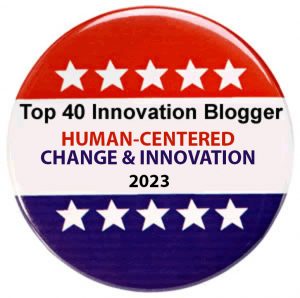 After a week of torrid voting and much passionate support, along with a lot of gut-wrenching consideration and jostling during the judging round, I am proud to announce your Top 40 Innovation Bloggers of 2023:
After a week of torrid voting and much passionate support, along with a lot of gut-wrenching consideration and jostling during the judging round, I am proud to announce your Top 40 Innovation Bloggers of 2023:

 Greg Satell is a popular speaker and consultant. His first book,
Greg Satell is a popular speaker and consultant. His first book,  Mike Shipulski brings together people, culture, and tools to change engineering behavior. He writes daily on Twitter as
Mike Shipulski brings together people, culture, and tools to change engineering behavior. He writes daily on Twitter as 

 A twenty-five year Procter & Gamble veteran, Pete has spent the last 8+ years applying insights from psychology and behavioral science to innovation, product design, and brand communication. He spent 17 years as a serial innovator, creating novel products, perfume delivery systems, cleaning technologies, devices and many other consumer-centric innovations, resulting in well over 100 granted or published patents. Find him at pete.mindmatters@gmail.com
A twenty-five year Procter & Gamble veteran, Pete has spent the last 8+ years applying insights from psychology and behavioral science to innovation, product design, and brand communication. He spent 17 years as a serial innovator, creating novel products, perfume delivery systems, cleaning technologies, devices and many other consumer-centric innovations, resulting in well over 100 granted or published patents. Find him at pete.mindmatters@gmail.com







 Soren Kaplan is the bestselling and award-winning author of Leapfrogging and The Invisible Advantage, an affiliated professor at USC’s Center for Effective Organizations, a former corporate executive, and a co-founder of
Soren Kaplan is the bestselling and award-winning author of Leapfrogging and The Invisible Advantage, an affiliated professor at USC’s Center for Effective Organizations, a former corporate executive, and a co-founder of 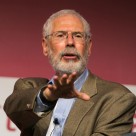
 Diana heads marketing at
Diana heads marketing at 
 Dainora (a.k.a. Dee) creates customer-centric content at Viima. Viima is the most widely used and highest rated innovation management software in the world. Passionate about environmental issues, Dee writes about sustainable innovation hoping to save the world – one article at the time.
Dainora (a.k.a. Dee) creates customer-centric content at Viima. Viima is the most widely used and highest rated innovation management software in the world. Passionate about environmental issues, Dee writes about sustainable innovation hoping to save the world – one article at the time.
 Arlen Meyers, MD, MBA is an emeritus professor at the University of Colorado School of Medicine, an instructor at the University of Colorado-Denver Business School and cofounding President and CEO of the Society of Physician Entrepreneurs at
Arlen Meyers, MD, MBA is an emeritus professor at the University of Colorado School of Medicine, an instructor at the University of Colorado-Denver Business School and cofounding President and CEO of the Society of Physician Entrepreneurs at 
 Leo is the founder of
Leo is the founder of  Rachel Audige is an Innovation Architect who helps organisations embed inventive thinking as well as a certified Systematic Inventive Thinking Facilitator, based in Melbourne.
Rachel Audige is an Innovation Architect who helps organisations embed inventive thinking as well as a certified Systematic Inventive Thinking Facilitator, based in Melbourne. Art Inteligencia is the lead futurist at Inteligencia Ltd. He is passionate about content creation and thinks about it as more science than art. Art travels the world at the speed of light, over mountains and under oceans. His favorite numbers are one and zero.
Art Inteligencia is the lead futurist at Inteligencia Ltd. He is passionate about content creation and thinks about it as more science than art. Art travels the world at the speed of light, over mountains and under oceans. His favorite numbers are one and zero.
 Phil McKinney is the Author of “Beyond The Obvious”, Host of the Killer Innovations Podcast and Syndicated Radio Show, a Keynote Speaker, President & CEO CableLabs and an Innovation Mentor and Coach.
Phil McKinney is the Author of “Beyond The Obvious”, Host of the Killer Innovations Podcast and Syndicated Radio Show, a Keynote Speaker, President & CEO CableLabs and an Innovation Mentor and Coach. Dr. Ralph-Christian Ohr has extensive experience in product/innovation management for international technology-based companies. His particular interest is targeted at the intersection of organizational and human innovation capabilities. You can follow him on Twitter
Dr. Ralph-Christian Ohr has extensive experience in product/innovation management for international technology-based companies. His particular interest is targeted at the intersection of organizational and human innovation capabilities. You can follow him on Twitter 
 Dr. Dean Anderson and Dr. Linda Ackerman Anderson lead
Dr. Dean Anderson and Dr. Linda Ackerman Anderson lead 

 Scott Anthony is a strategic advisor, writer and speaker on topics of growth and innovation. He has been based in Singapore since 2010, and currently serves at the Managing Director of Innosight’s Asia-Pacific operations.
Scott Anthony is a strategic advisor, writer and speaker on topics of growth and innovation. He has been based in Singapore since 2010, and currently serves at the Managing Director of Innosight’s Asia-Pacific operations.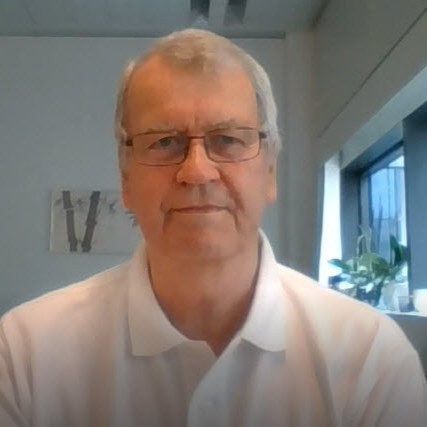 Paul Hobcraft runs
Paul Hobcraft runs 
 Chateau G Pato is a senior futurist at Inteligencia Ltd. She is passionate about content creation and thinks about it as more science than art. Chateau travels the world at the speed of light, over mountains and under oceans. Her favorite numbers are one and zero.
Chateau G Pato is a senior futurist at Inteligencia Ltd. She is passionate about content creation and thinks about it as more science than art. Chateau travels the world at the speed of light, over mountains and under oceans. Her favorite numbers are one and zero. Jesse Nieminen is the Co-founder and Chairman at
Jesse Nieminen is the Co-founder and Chairman at  As an experience architect, Alain helps leaders craft customer, employee and shareholder experiences for profit, reinvention and transformation. He does this through his personal consultancy Alain Thys & Co as well as the transformative venture studio
As an experience architect, Alain helps leaders craft customer, employee and shareholder experiences for profit, reinvention and transformation. He does this through his personal consultancy Alain Thys & Co as well as the transformative venture studio 

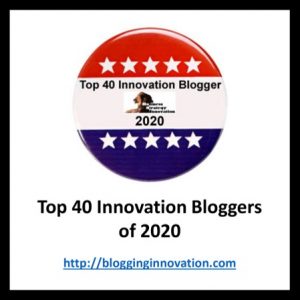
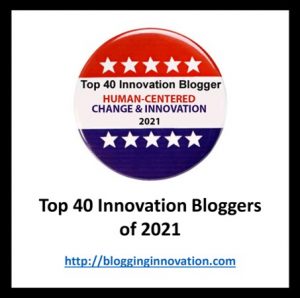
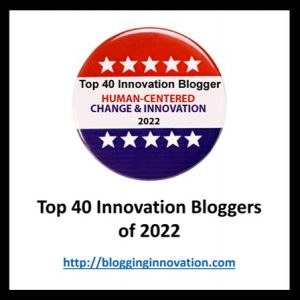
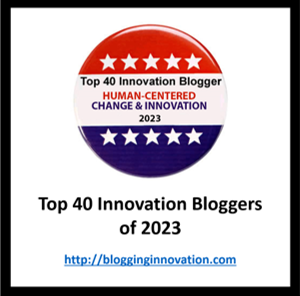


 Happy Holidays!
Happy Holidays!
 Human-Centered Change and Innovation loves making innovation insights accessible for the greater good, because we truly believe that the better our organizations get at delivering value to their stakeholders the less waste of natural resources and human resources there will be.
Human-Centered Change and Innovation loves making innovation insights accessible for the greater good, because we truly believe that the better our organizations get at delivering value to their stakeholders the less waste of natural resources and human resources there will be.


